Popular categories
Looking for a yarn?

100% Cotton
from 1.10 £ /50g
Order DROPS Needles & Hooks
Clicking the ORDER button will redirect you to Wool Warehouse Direct Ltd website
The yarn cost is calculated from the pattern’s smallest size and the yarn’s cheapest product type. Looking for an even better price? You might find it on the DROPS Deals!
Sandy's Love
Crocheted blanket with granny squares. Piece is crocheted in DROPS Paris.
DROPS design: Pattern w-711
Yarn group C or A + A
----------------------------------------------------------
Measurements: approx. 80 cm x 119 cm
Materials:
DROPS PARIS from Garnstudio (belongs to yarn group C)
150 g colour 101, light blue
150 g colour 100, light wash
150 g colour 41, mustard
150 g colour 07, heather
100 g colour 35, vanilla
100 g colour no 33, medium pink
100 g colour 38, raspberry
100 g colour 05, light purple
100 g colour 58, powder pink
100 g colour 30, grey blue
50 g colour 48, petrol
50 g colour 21, light mint green
50 g colour 25, moss green
Blanket worked with one colour = 900 g Paris.
Piece can also be crocheted with yarn from:
“Alternative yarn (yarn group C)” - see link below.
DROPS CROCHET HOOK SIZE 4.5 mm - or size needed to get 16 treble crochets x 9 rows = 10 cm in width and 10 cm vertically. One square measures approx. 13 x 13 cm.
----------------------------------------------------------
-------------------------------------------------------
Alternative Yarn – See how to change yarns here
Yarn Groups A to F – Use the same pattern and change the yarn here
Yarn usage using an alternative yarn – Use our yarn converter here
-------------------------------------------------------

100% Cotton
from 1.10 £ /50g
Order DROPS Needles & Hooks
Clicking the ORDER button will redirect you to Wool Warehouse Direct Ltd website
The yarn cost is calculated from the pattern’s smallest size and the yarn’s cheapest product type. Looking for an even better price? You might find it on the DROPS Deals!
- English (UK/cm)
- Česky
- Dansk
- Deutsch
- Eesti keel
- English (US/in)
- Español
- Français
- Íslenska
- Italiano
- Magyar
- Nederlands
- Norsk
- Polski
- Português
- Suomi
- Svenska
- English (UK/cm), Bulgaria
- English (UK/cm), Croatia
- English (UK/cm), Greece
- English (UK/cm), Latvia
- English (UK/cm), Lithuania
- English (UK/cm), Romania
- English (UK/cm), Slovenia
- Česky, Slovakia
Pattern instructions
PATTERN:
See diagram A.1.
COLOUR COMBINATION (applies to crochet squares):
SQUARE 1:
ROUND 1: light wash
ROUND 2: light purple
ROUND 3: heather
ROUND 4: mustard
ROUND 5: medium pink
SQUARE 2:
ROUND 1: powder pink
ROUND 2: heather
ROUND 3: mustard
ROUND 4: grey blue
ROUND 5: light wash
SQUARE 3:
ROUND 1: raspberry
ROUND 2: heather
ROUND 3: medium pink
ROUND 4: mustard
ROUND 5: vanilla
SQUARE 4:
ROUND 1: mustard
ROUND 2: raspberry
ROUND 3: heather
ROUND 4: moss green
ROUND 5: light mint green
SQUARE 5:
ROUND 1: medium pink
ROUND 2: mustard
ROUND 3: heather
ROUND 4: light purple
ROUND 5: light wash
SQUARE 6:
ROUND 1: vanilla
ROUND 2: mustard
ROUND 3: heather
ROUND 4: raspberry
ROUND 5: medium pink
SQUARE 7:
ROUND 1: medium pink
ROUND 2: heather
ROUND 3: moss green
ROUND 4: light mint green
ROUND 5: vanilla
SQUARE 8:
ROUND 1: powder pink
ROUND 2: light purple
ROUND 3: vanilla
ROUND 4: grey blue
ROUND 5: light wash
SQUARE 9:
ROUND 1: light wash
ROUND 2: grey blue
ROUND 3: mustard
ROUND 4: heather
ROUND 5: powder pink
SQUARE 10:
ROUND 1: vanilla
ROUND 2: mustard
ROUND 3: medium pink
ROUND 4: heather
ROUND 5: raspberry
SQUARE 11:
ROUND 1: mustard
ROUND 2: heather
ROUND 3: raspberry
ROUND 4: light mint green
ROUND 5: light purple
SQUARE 12:
ROUND 1: mustard
ROUND 2: vanilla
ROUND 3: raspberry
ROUND 4: light purple
ROUND 5: powder pink
SQUARE 13:
ROUND 1: light purple
ROUND 2: powder pink
ROUND 3: grey blue
ROUND 4: petrol
ROUND 5: light mint green
SQUARE 14:
ROUND 1: vanilla
ROUND 2: mustard
ROUND 3: heather
ROUND 4: petrol
ROUND 5: light wash
SQUARE 15:
ROUND 1: heather
ROUND 2: grey blue
ROUND 3: light wash
ROUND 4: petrol
ROUND 5: powder pink
SQUARE 16:
ROUND 1: vanilla
ROUND 2: powder pink
ROUND 3: raspberry
ROUND 4: heather
ROUND 5: moss green
SQUARE 17:
ROUND 1: vanilla
ROUND 2: mustard
ROUND 3: heather
ROUND 4: light wash
ROUND 5: grey blue
SQUARE 18:
ROUND 1: heather
ROUND 2: raspberry
ROUND 3: mustard
ROUND 4: light purple
ROUND 5: powder pink
YARN CHANGE TIP:
To avoid fastening many strands the yarn ends can be fastened from the beginning of round along the way as follows:
ROUND 1: Place cast-on strand together with chain stitch ring and work around this the entire round, then cut the cast-on yarn.
ROUNDS 2-5: Work the first 3 chain stitches with double yarn of the new colour (yarn end + yarn from ball), then continue with 1 strand from the ball, the yarn end can be cut. At the end of each round, the yarn end from this round must be fastened, i.e. on every square there are 5 strands to fasten.
----------------------------------------------------------
BLANKET:
The blanket consists of 54 squares. work all squares first, then work them together and work an edge around the entire blanket at the end.
CROCHET SQUARE:
Begin with hook size 4.5 mm and Paris and work PATTERN according to diagram A.1. Switch colour on every round and work 3 squares of every COLOUR COMBINATION - see explanation above = 54 squares. REMEMBER THE CROCHET TENSION! 1 square measures approx. 13 x 13 cm. Fasten the strands while working - read YARN CHANGE TIP.
ASSEMBLY:
Place squares with correct square number as shown in illustration/chart (6 squares in width and 9 squares in length). Square number on illustration/chart refers to crochet squares with same number explained below COLOUR COMBINATION.
Work squares together in rows alongside, then work the rows together across.
Work them together as follows:
Place 2 squares together wrong side against wrong side. Work around both layers with colour 101, light blue: ** 1 double crochet around corner, * 3 chain stitches, skip the next 2 double crochets, work 1 double crochet in next chain space *. Work from *-* until and with corner (= 6 chain spaces) and work 2 chain stitches (= transition to the next 2 squares) **. Repeat from **-** along the entire row and finish with 1 double crochet around the last corners. Fasten off. Work like this until all rows have been worked together along. Then work the rows together the same way across.
EDGE:
Work an edge around the entire blanket with colour 101, light blue.
Start working in a corner on the blanket. Fasten the strand with 1 slip stitch around the chain stitches on the corner and work as follows:
3 chain stitches (replaces 1 treble crochet), 1 chain stitch, 1 treble crochet, 3 chain stitches, 1 treble crochet, 1 chain stitch, 1 treble crochet, 2 chain stitches = 1st corner. Then work as follows along the side:
** Skip 2 treble crochets, * 2 treble crochets around the chain-space, 2 chain stitches, skip 2 treble crochets *, work from *-* 5 times, 1 treble crochet around the chain-space in the corner of the square, 2 chain stitches, 1 treble crochet around the corner of next square **, work from **-** until 2nd corner of blanket. Around the corner work: 1 treble crochet, 1 chain stitch, 1 treble crochet, 3 chain stitches, 1 treble crochet, 1 chain stitch, 1 treble crochet and 2 chain stitches.
Work from **-** until the 3rd corner of blanket, work around the corner as before.
Work from **-** until the 4th corner of the blanket, work around the corner as before.
Work from **-** until the 1st corner and finish with 1 slip stitch in 3rd chain stitch on at the start of the round.
Diagram

|
= 1 chain stitch |

|
= 3 chain stitches |

|
= treble crochet in stitch |

|
= treble crochet around chain space |

|
= round begins with 3 chain stitches and finishes with 1 slip stitch in 3rd chain stitch at beginning of round |

|
= 5 chain stitches, form a ring with 1 slip stitch in first chain stitch - see point on circle, round begins and ends here |
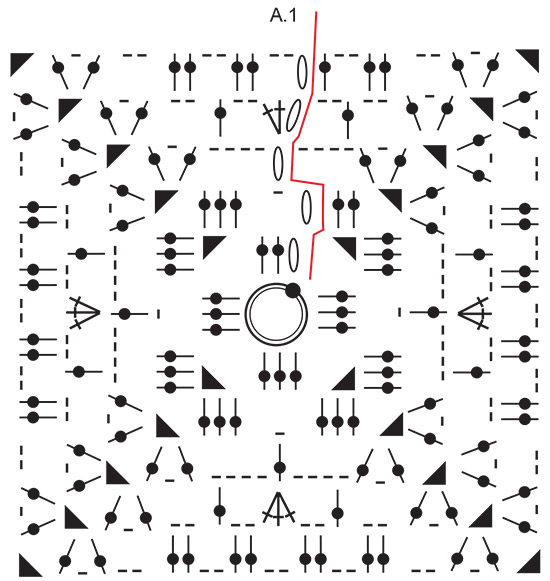

What can you do with our patterns? You can share DROPS patterns online, using the pattern original picture, materials, name and number. But you are NOT ALLOWED to reproduce the complete pattern digitally in any way. Yarn stores are welcome to use the DROPS pattern database to promote the sale of our assortment. You can print out our patterns, make as many copies as you’d like. The only thing we ask is that you don't make any changes / additions to the original printed document. And that the patterns according to the DROPS philosophy are given out to the consumers for free. Editorials that wish to publish our patterns in printed books or magazines can contact us for more information. The sale of garments based on DROPS patterns is permitted as long as they are sold as single items or per order. Further commercial use of the patterns is not permitted. It has to be clearly stated that the garment is made based on a design from DROPS DESIGN. The use of clothing labels of which DROPS DESIGN forms part is conditioned by the inclusion of the following text: “A DROPS DESIGN made by …..”. The use of DROPS photos for marketing purposes/sales is only permitted in connection with the use/sale of DROPS products. The photos may not be cut or edited and the logo should be clearly visible.
We reserve the right to withdraw the permission for use of our patterns at any time, notwithstanding the reason.
Each of our patterns has specific tutorial videos to help you.
These step-by-step tutorials might also help you:
Why is the knitting/crochet tension so important?
Knitting tension is what determines the final measurements of your work, and is usually measured per 10 x 10 cm. It is provided like so: number of stitches in width x number of rows in height - eg: 19 stitches x 26 rows = 10 x 10 cm.
The knitting tension is very individual; some people knit/crochet loosely while others work tightly. You adjust the knitting tension with the needle size, which is why the suggested needle size is only meant as a guide! You need to adjust this (up or down) to ensure that YOUR knitting tension matches the knitting tension provided in the pattern. If you work with a different knitting tension than provided you will have a different yarn consumption, and your work will have different measurements than what the pattern suggests.
The knitting tension also determines which yarns can replace each other. As long as you achieve the same knitting tension you can replace one yarn with another.
See DROPS lesson: How to measure your tension/gauge
See DROPS video: How to make a gauge tension swatch
How do I know how many balls of yarn I need?
The required amount of yarn is provided in grams, eg: 450 g. To calculate how many balls you’ll need you first need to know how many grams are in 1 ball (25g, 50g or 100g). This information is available if you click on the individual yarn quality on our pages. Divide the amount required with the amount of each ball. For example, if each ball is 50g (the most common amount), the calculation will be as follows: 450 / 50 = 9 balls.
Can I use a different yarn than what the pattern suggests?
The important thing when changing from one yarn to another is that the knitting/crochet tension remains the same. This is so that the measurements of the finished piece will be the same as on the sketch provided. It is easier to achieve the same knitting tension using yarns from the same yarn group. It is also possible to work with multiple strands of a thinner yarn to achieve the knitting tension of a thicker one. Please try our yarn converter. We recommend you to always work a test swatch.
Please NOTE: when changing yarn the garment might have a different look and feel to the garment in the photo, due to individual properties and qualities of each yarn.
See DROPS lesson: Can I use a different yarn than the one mentioned in the pattern?
What are the yarn groups?
All our yarns are categorised into yarn groups (from A to F) according to thickness and knitting tension – group A contains the thinnest yarns and group F the thickest. This makes it easier for you to find alternative yarns to our patterns, should you wish to switch yarn. All yarns within the same group have a similar knitting tension and can easily replace each other. However, different yarn qualities have different structures and properties which will give the finished work a unique look and feel.
How do I use the yarn calculator?
At the top of all our patterns you’ll find a link to our yarn calculator, which is a helpful tool should you wish to use a different yarn than suggested. By filling in the yarn quality you wish to replace, the amount (in your size) and number of strands, the calculator will present good alternative yarns with the same knitting tension. Additionally it will tell you how much you’ll require in the new qualities and whether you’ll need to work with multiple strands. Most skeins are 50g (some are 25g or 100g).
If the pattern is worked with multiple colours, every colour will have to be calculated separately. Similarly, if the pattern is worked with several strands of different yarns (for example 1 strand Alpaca and 1 strand Kid-Silk) you will have to find alternatives for each, individually.
Why do you show discontinued yarns in the patterns?
Since different yarns have different qualities and textures we have chosen to keep the original yarn in our patterns. However, you can easily find options among our available qualities by using our yarn calculator, or simply pick a yarn from the same yarn group.
It is possible that some retailers still have discontinued yarns in stock, or that someone has a few skeins at home that they would like to find patterns for.
The yarn calculator will provide both alternative yarn as well as required amount in the new quality.
What size should I knit?
If you think it's hard to decide what size to make, it can be a good idea to measure a garment you own already and like the size of. Then you can pick the size by comparing those measures with the ones available in the pattern's size chart.
You'll find the size chart at the bottom of the pattern.
See DROPS lesson: How to read size chart
Why do I get the wrong knitting tension with the suggested needle size?
The needle size provided in the pattern serves only as a guide, the important thing is to follow the knitting tension. And since knitting tension is very individual, you will have to adjust the needle size to ensure that YOUR tension is the same as in the pattern – maybe you’ll have to adjust 1, or even 2 needle sizes, up or down to achieve the correct tension. For this, we recommend that you work test swatches.
Should you work with a different knitting tension than the one provided, the measurements of the finished garment might deviate from the measurement sketch.
See DROPS lesson: How to measure your tension/gauge
See DROPS video: How to make a tension/gauge swatch
Why is the pattern worked top-down?
Working a garment top-down provides more flexibility and room for personal adjustment. For example it is easier to try the garment on while working, as well as making adjustments to length of yoke and shoulder caps.
The instructions are carefully explaining every step, in the correct order. Diagrams are adjusted to the knitting direction and are worked as usual.
How do I work according to a knitting diagram?
The diagram depicts all rows/rounds, and every stitch seen from the right side. It is read from bottom to top, from right to left. 1 square = 1 stitch.
When working back and forth, every other row is worked from the right side and every other row is worked from the wrong side. When working from the wrong side, the diagram will have to be worked reversed: from left to right, knit stitches are purled, purl stitches are knit etc.
When working in the round every round is worked from the right side and the diagram are worked from right to left on all rounds.
See DROPS lesson: How to read knitting diagrams
How do I work according to a crochet diagram?
The diagram depicts all rows/rounds, and every stitch seen from the right side. It is worked from bottom to top, from right to left.
When working back and forth every other row is worked from the right side: from right to left and every other row is worked from the wrong side: from left to right.
When working in the round, every row in the diagram are worked from the right side, from right to left.
When working a circular diagram you start in the middle and work your way outwards, counter clockwise, row by row.
The rows usually start with a given number of chain stitches (equivalent to the height of the following stitch), this will either be depicted in the diagram or explained in the pattern.
See DROPS lesson: How to read crochet diagrams
How do I work several diagrams simultaneously on the same row/round?
Instructions for working several diagrams after each other on the same row/round, will often be written like so: “work A.1, A.2, A.3 a total of 0-0-2-3-4 times". This means you work A.1 once, then A.2 is worked once, and A.3 is repeated (in width) the number of times provided for your size – in this case like so: S = 0 times, M = 0 times, L=2 times, XL= 3 times and XXL = 4 times.
The diagrams are worked as usual: begin with the first row in A.1, then work the first row in A.2 etc.
See DROPS lesson: How to read knitting diagrams
See DROPS lesson: How to read crochet diagrams
Why are the sleeves shorter in larger sizes?
The total width of the garment (from wrist-to-wrist) will be larger in the larger sizes, despite the actual sleeves being shorter. The larger sizes have longer sleeve caps and wider shoulders, so there will be a good fit in all sizes.
Where on the garment is the length measured?
The measurement sketch/schematic drawing provides information regarding the full length of the garment. If it’s a jumper or a jacket the length is measured from the highest point on the shoulder closest to the neckline, and straight down to the bottom of the garment. It is NOT measured from the tip of shoulder. Similarly, the length of yoke is measured from the highest point on the shoulder and down to where yoke is split into body and sleeves.
On a jacket measures are never taken along bands, unless specifically stated. Always measure inside band stitches when measuring the length.
See DROPS lesson: How to read a schematic drawing
What is a repeat?
Diagrams are often repeated on the round or in height. 1 repeat is the diagram the way it appears in the pattern. If it says to work 5 repeats of A.1 in the round, then you work A.1 a total of 5 times after/next to each other in the round. If it says to work 2 repeats of A.1 vertically/in height you work the entire diagram once, then begin again at the start and work the entire diagram one more time.
Why does the piece start with more chain stitches than it’s worked with?
Chain stitches are slightly narrower than other stitches and to avoid working the cast-on edge too tight, we simply chain more stitches to begin with. The stitch count will be adjusted on the following row to fit the pattern and measurement sketch.
Why increase before the rib edge when the piece is worked top-down?
The rib edge is more elastic and will contract slightly compared to, for example, stocking stitch. By increasing before the rib edge, you avoid a visible difference in width between the rib edge and the rest of the body.
Why increase in the cast-off edge?
It’s very easy to cast off too tightly, and by making yarn overs while casting off (and simultaneously casting these off) you avoid a too tight cast off edge.
See DROPS video: How to bind off with yarn overs (yo)
How do I increase/decrease on every 3rd and 4th row/round alternately?
To achieve an even increase (or decrease) you can increase on, for example: every 3rd and 4th row alternately, like so: work 2 rows and increase on the 3rd row, work 3 rows and increase on the 4th. Repeat this until the increase is complete.
See DROPS lesson: Increase or decrease 1 st on every 3rd and 4th row alternately
How can I work a jacket in the round instead of back and forth?
Should you prefer to work in the round instead of back and forth, you may of course adjust the pattern. You’ll need to add steeks mid-front (usually 5 stitches), and follow the instructions. When you would normally turn and work from the wrong side, simply work across the steek and continue in the round. At the end you’ll cut the piece open, pick up stitches to work bands, and cover the cut edges.
See DROPS video: How to knit steeks and cut open
Can I work a jumper back and forth instead of in the round?
Should you prefer to work back and forth instead of in the round, you may of course adjust the pattern so you work the pieces separately and then assemble them at the end. Divide the stitches for the body in 2, add 1 edge stitch in each side (for sewing) and work the front and back pieces separately.
See DROPS lesson: Can I adapt a pattern for circular needles into straight needles?
Why is the pattern slightly different than what I see in the photo?
Pattern repeats can vary slightly in the different sizes, in order to get the correct proportions. If you’re not working the exact same size as the garment in the photo, yours might deviate slightly. This has been carefully developed and adjusted so that the complete impression of the garment is the same in all sizes.
Make sure to follow instructions and diagrams for your size!
How do I make a women’s size garment into a men’s size one?
If you have found a pattern you like which is available in women’s size it’s not very difficult to convert it to men’s size. The biggest difference will be the length of sleeves and body. Start working on the women size that you think would fit across the chest. The additional length will be worked right before you cast off for the armhole/sleeve cap. If the pattern is worked top-down you can add the length right after the armhole or before the first decrease on sleeve.
Regarding additional yarn amount, this will depend on how much length you add, but it is better with a skein too many than too few.
How do I prevent a hairy garment from shedding?
All yarns will have excess fibres (from production) that might come off as lint or shedding. Brushed yarns (ie hairier yarns) have more of these loose, excess fibres, causing more shedding.
Shedding also depends on what is worn under or over the garment, and whether this pulls at the yarn fibres. It’s therefore not possible to guarantee that there will be no shedding
Below are some tips on how to get the best result when working with hairier yarns:
1. When the garment is finished (before you wash it) shake it vigorously so the looser hairs come off. NOTE: do NOT use a lint roller, brush or any method that pulls at the yarn.
2. Place the garment in a plastic bag and put it in your freezer - the temperature will cause the fibres to become less attached to each other, and excess fibres will come off easier.
3. Leave in the freezer for a few hours before taking it out and shaking it again.
4. Wash the garment according to the instructions on the yarn label.
Why does my garment pill?
Pilling is a natural process that happens to even the most exclusive of fibers. It's a natural sign of wear and tear that is hard to avoid, and that is most visible in high friction areas of your garment like a sweater's arms and cuffs.
You can make your garment look as new by removing the pilling, using a fabric comb or a pill/lint remover.
In the meantime, you can read the questions and answers that others have left to this pattern or join the DROPS Workshop on Facebook to get help from fellow knitters/crocheters!
You might also like...
Sandy's Love |
|||||||||||||||||||
 |
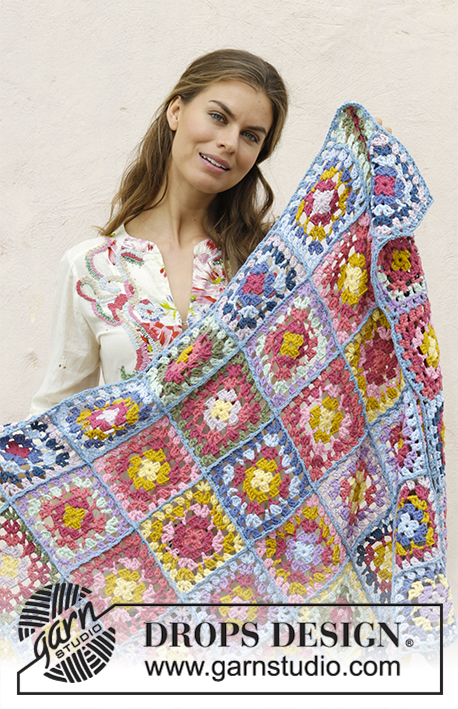 |
||||||||||||||||||
Crocheted blanket with granny squares. Piece is crocheted in DROPS Paris.
DROPS 189-2 |
|||||||||||||||||||
|
INFORMATION FOR PATTERN: PATTERN: See diagram A.1. COLOUR COMBINATION (applies to crochet squares): SQUARE 1: ROUND 1: light wash ROUND 2: light purple ROUND 3: heather ROUND 4: mustard ROUND 5: medium pink SQUARE 2: ROUND 1: powder pink ROUND 2: heather ROUND 3: mustard ROUND 4: grey blue ROUND 5: light wash SQUARE 3: ROUND 1: raspberry ROUND 2: heather ROUND 3: medium pink ROUND 4: mustard ROUND 5: vanilla SQUARE 4: ROUND 1: mustard ROUND 2: raspberry ROUND 3: heather ROUND 4: moss green ROUND 5: light mint green SQUARE 5: ROUND 1: medium pink ROUND 2: mustard ROUND 3: heather ROUND 4: light purple ROUND 5: light wash SQUARE 6: ROUND 1: vanilla ROUND 2: mustard ROUND 3: heather ROUND 4: raspberry ROUND 5: medium pink SQUARE 7: ROUND 1: medium pink ROUND 2: heather ROUND 3: moss green ROUND 4: light mint green ROUND 5: vanilla SQUARE 8: ROUND 1: powder pink ROUND 2: light purple ROUND 3: vanilla ROUND 4: grey blue ROUND 5: light wash SQUARE 9: ROUND 1: light wash ROUND 2: grey blue ROUND 3: mustard ROUND 4: heather ROUND 5: powder pink SQUARE 10: ROUND 1: vanilla ROUND 2: mustard ROUND 3: medium pink ROUND 4: heather ROUND 5: raspberry SQUARE 11: ROUND 1: mustard ROUND 2: heather ROUND 3: raspberry ROUND 4: light mint green ROUND 5: light purple SQUARE 12: ROUND 1: mustard ROUND 2: vanilla ROUND 3: raspberry ROUND 4: light purple ROUND 5: powder pink SQUARE 13: ROUND 1: light purple ROUND 2: powder pink ROUND 3: grey blue ROUND 4: petrol ROUND 5: light mint green SQUARE 14: ROUND 1: vanilla ROUND 2: mustard ROUND 3: heather ROUND 4: petrol ROUND 5: light wash SQUARE 15: ROUND 1: heather ROUND 2: grey blue ROUND 3: light wash ROUND 4: petrol ROUND 5: powder pink SQUARE 16: ROUND 1: vanilla ROUND 2: powder pink ROUND 3: raspberry ROUND 4: heather ROUND 5: moss green SQUARE 17: ROUND 1: vanilla ROUND 2: mustard ROUND 3: heather ROUND 4: light wash ROUND 5: grey blue SQUARE 18: ROUND 1: heather ROUND 2: raspberry ROUND 3: mustard ROUND 4: light purple ROUND 5: powder pink YARN CHANGE TIP: To avoid fastening many strands the yarn ends can be fastened from the beginning of round along the way as follows: ROUND 1: Place cast-on strand together with chain stitch ring and work around this the entire round, then cut the cast-on yarn. ROUNDS 2-5: Work the first 3 chain stitches with double yarn of the new colour (yarn end + yarn from ball), then continue with 1 strand from the ball, the yarn end can be cut. At the end of each round, the yarn end from this round must be fastened, i.e. on every square there are 5 strands to fasten. ---------------------------------------------------------- BLANKET: The blanket consists of 54 squares. work all squares first, then work them together and work an edge around the entire blanket at the end. CROCHET SQUARE: Begin with hook size 4.5 mm and Paris and work PATTERN according to diagram A.1. Switch colour on every round and work 3 squares of every COLOUR COMBINATION - see explanation above = 54 squares. REMEMBER THE CROCHET TENSION! 1 square measures approx. 13 x 13 cm. Fasten the strands while working - read YARN CHANGE TIP. ASSEMBLY: Place squares with correct square number as shown in illustration/chart (6 squares in width and 9 squares in length). Square number on illustration/chart refers to crochet squares with same number explained below COLOUR COMBINATION. Work squares together in rows alongside, then work the rows together across. Work them together as follows: Place 2 squares together wrong side against wrong side. Work around both layers with colour 101, light blue: ** 1 double crochet around corner, * 3 chain stitches, skip the next 2 double crochets, work 1 double crochet in next chain space *. Work from *-* until and with corner (= 6 chain spaces) and work 2 chain stitches (= transition to the next 2 squares) **. Repeat from **-** along the entire row and finish with 1 double crochet around the last corners. Fasten off. Work like this until all rows have been worked together along. Then work the rows together the same way across. EDGE: Work an edge around the entire blanket with colour 101, light blue. Start working in a corner on the blanket. Fasten the strand with 1 slip stitch around the chain stitches on the corner and work as follows: 3 chain stitches (replaces 1 treble crochet), 1 chain stitch, 1 treble crochet, 3 chain stitches, 1 treble crochet, 1 chain stitch, 1 treble crochet, 2 chain stitches = 1st corner. Then work as follows along the side: ** Skip 2 treble crochets, * 2 treble crochets around the chain-space, 2 chain stitches, skip 2 treble crochets *, work from *-* 5 times, 1 treble crochet around the chain-space in the corner of the square, 2 chain stitches, 1 treble crochet around the corner of next square **, work from **-** until 2nd corner of blanket. Around the corner work: 1 treble crochet, 1 chain stitch, 1 treble crochet, 3 chain stitches, 1 treble crochet, 1 chain stitch, 1 treble crochet and 2 chain stitches. Work from **-** until the 3rd corner of blanket, work around the corner as before. Work from **-** until the 4th corner of the blanket, work around the corner as before. Work from **-** until the 1st corner and finish with 1 slip stitch in 3rd chain stitch on at the start of the round. |
|||||||||||||||||||
Diagram explanations |
|||||||||||||||||||
|
|||||||||||||||||||

|
|||||||||||||||||||

|
|||||||||||||||||||
|
Have you made this or any other of our designs? Tag your pictures in social media with #dropsdesign so we can see them! Do you need help with this pattern?You'll find tutorial videos, a Comments/Questions area and more by visiting the pattern on garnstudio.com. © 1982-2024 DROPS Design A/S. We reserve all rights. This document, including all its sub-sections, has copyrights. Read more about what you can do with our patterns at the bottom of each pattern on our site. |
|||||||||||||||||||
With over 40 years in knitting and crochet design, DROPS Design offers one of the most extensive collections of free patterns on the internet - translated to 17 languages. As of today we count 304 catalogues and 11422 patterns - 11422 of which are translated into English (UK/cm).
We work hard to bring you the best knitting and crochet have to offer, inspiration and advice as well as great quality yarns at incredible prices! Would you like to use our patterns for other than personal use? You can read what you are allowed to do in the Copyright text at the bottom of all our patterns. Happy crafting!

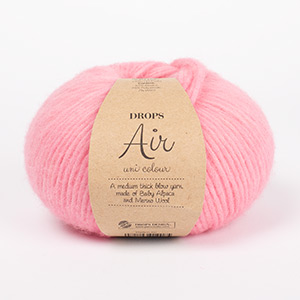




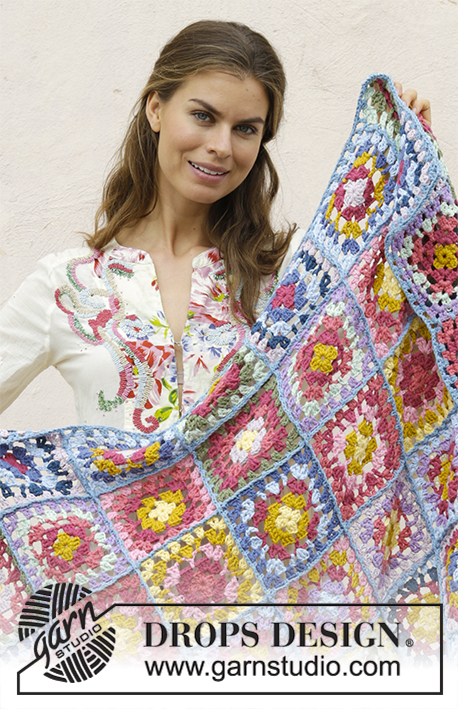
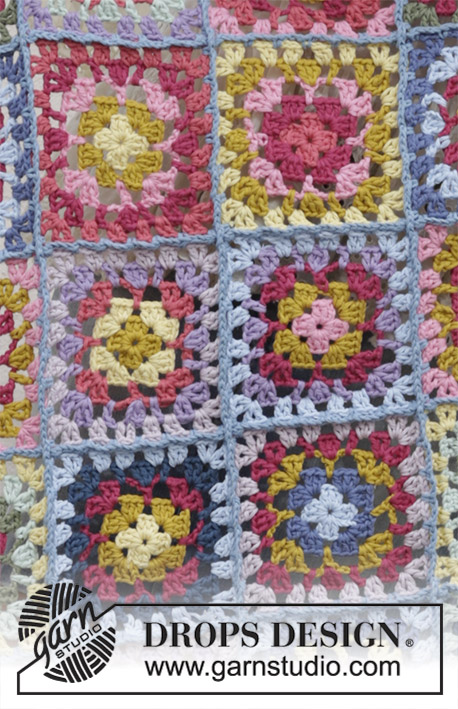



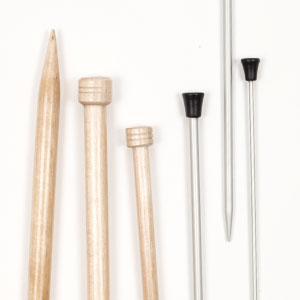







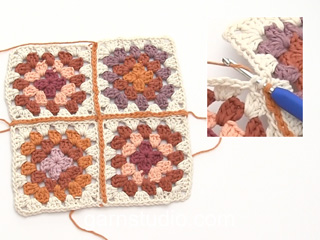

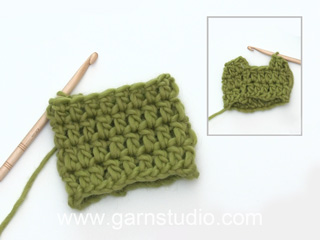
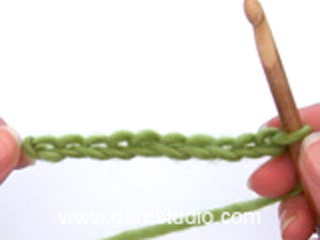
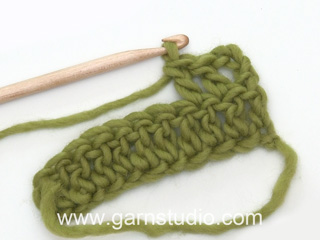
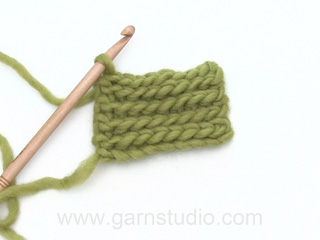
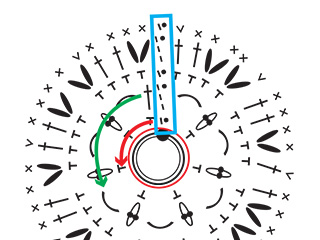
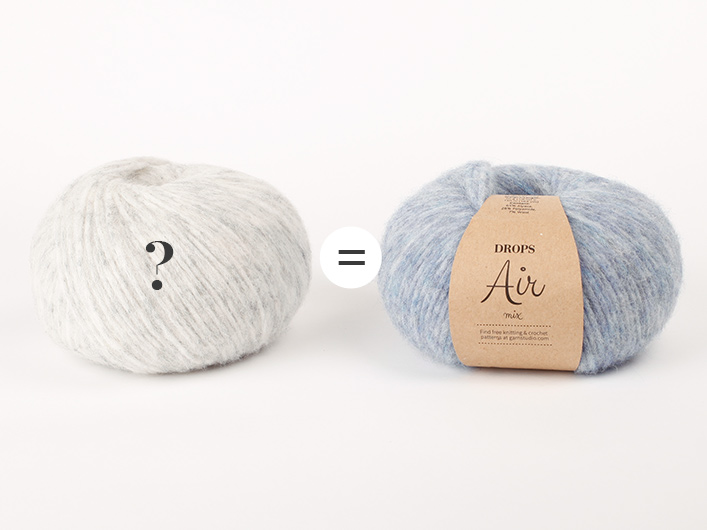

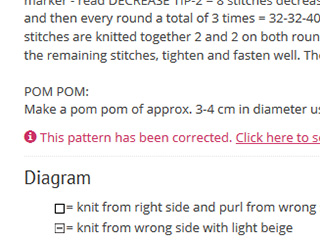
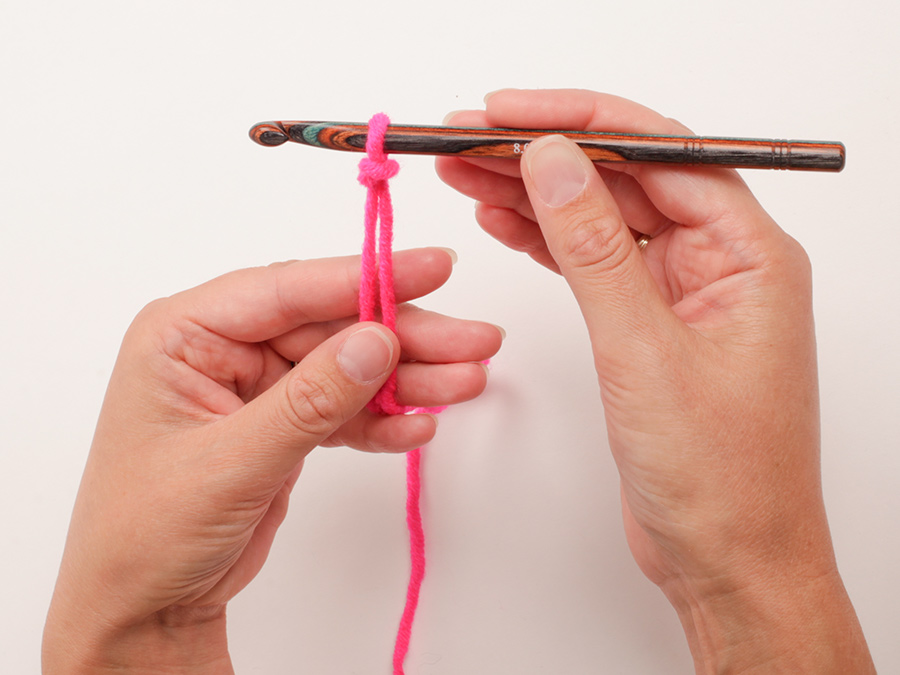
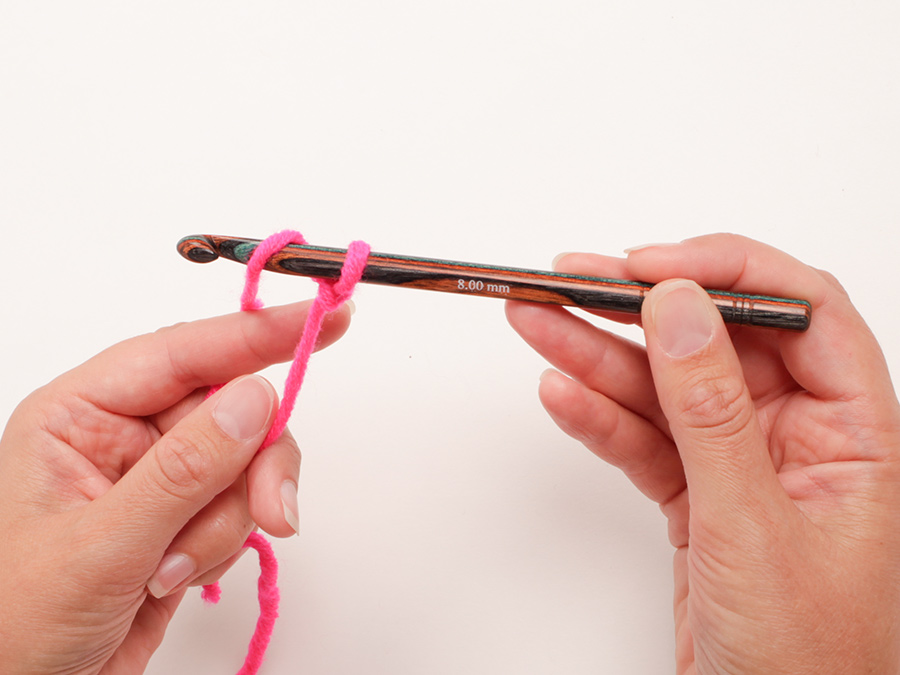

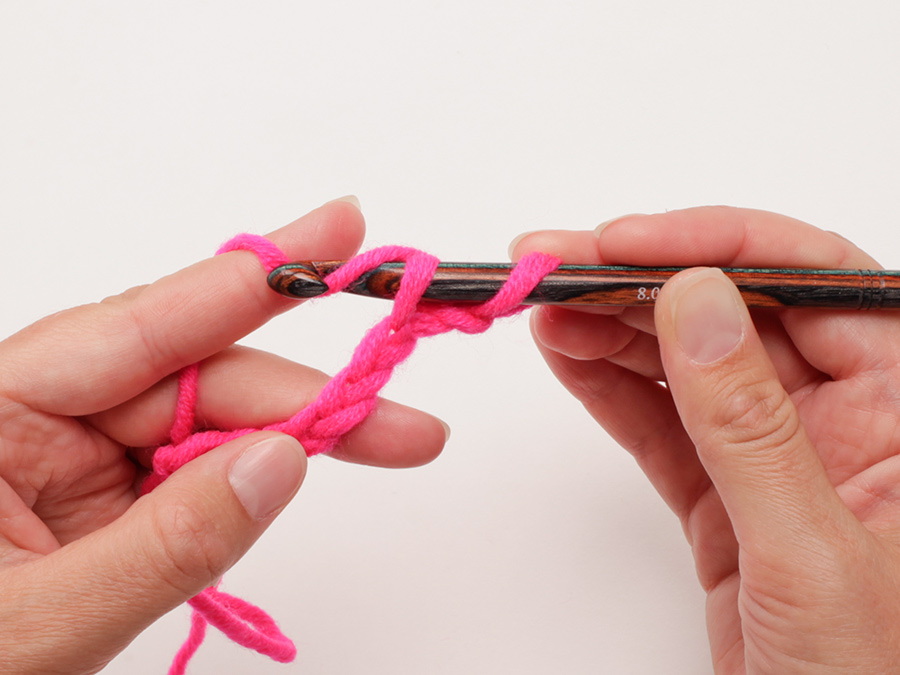
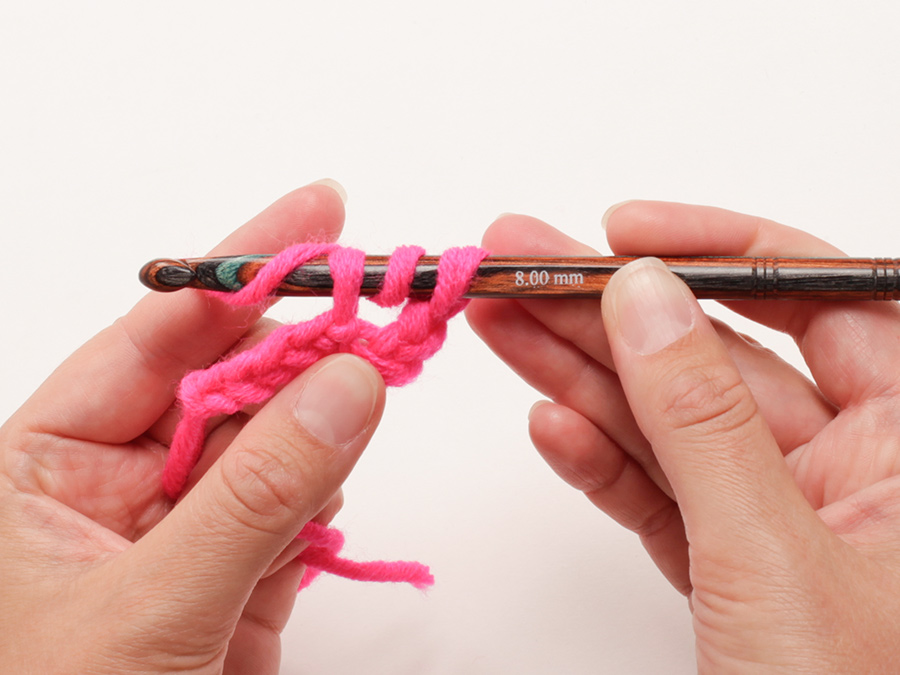

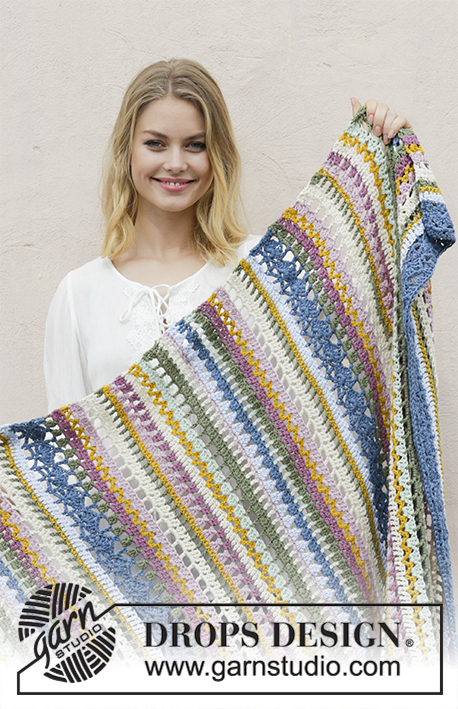
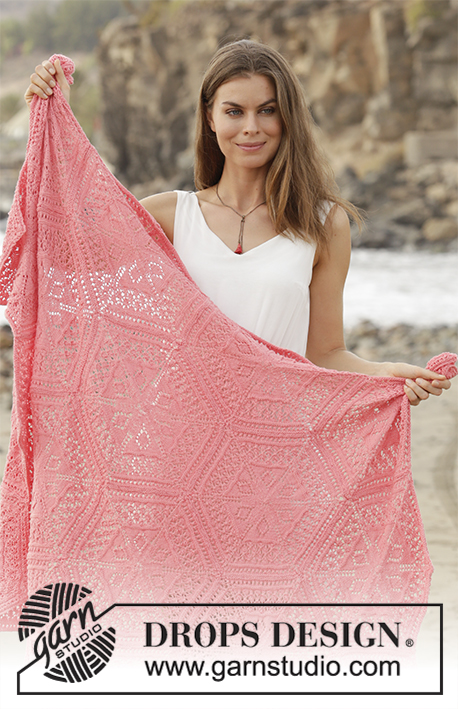
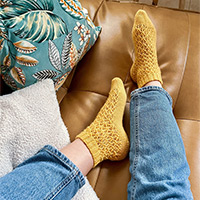
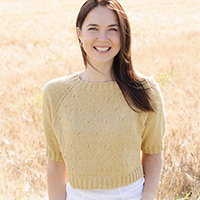
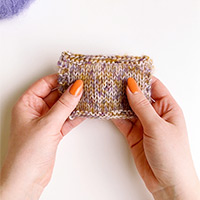
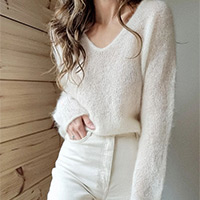

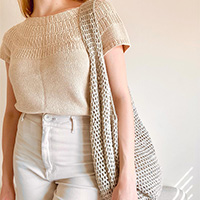
Comments / Questions (10)
Dans les vidéos aide, on voit comment assembler les carrés avec des mailles coulées, en les plaçant côte à côte. Mais dans les instructions, on doit placer les carrés envers contre envers et assembler avec des mailles serrées, dans une séquence plutôt complexe... Est-ce que ces 2 méthodes peuvent être faites? Puis-je assembler avec des mailles coulées, comme dans le pull 241-16 Garden square sweater?
03.10.2023 - 03:59DROPS Design answered:
Bonjour Sylvie, tout à fait, il existe différentes façons d'assembler les carrés entre eux, choisissez la technique que vous préférez pour le résultat que vous souhaitez. Bon assemblage!
03.10.2023 - 08:17Omdat ik het kleed op een vliesdeken wil naaien zou ik het afwerken graag zonder lussen willen doen maar gewoon een vaste rand hebben jullie daar ook een stekenverhouding voor of is het gewoon in iedere steek een vaste haken Alvast Bedankt Corrie
09.04.2023 - 08:21DROPS Design answered:
Dag Corrie,
Je kan inderdaad een vaste in iedere vaste haken. Je zou dan uit moeten komen. Let erop dat je de vasten niet te strak haakt om te voorkomen dat het gaat trekken.
12.04.2023 - 20:16Met deze nog een vraag, ik ben inmiddels bij vierkant 11 heb zoals in het patroon staat de kleurwisselingen met dubbele draad gedaan, zoals ik heb begrepen vorige kleur en nieuwe kleur de eerste 3 lossen samen. Eigenlijk vind ik dit niet mooi en als ik de afbeelding van de deken goed bekijk zie ik dat dat niet zo is gedaan. (Bij mijn werk zie je dus bij aanvang nieuwe toer 2 kleuren) Graag verneem hoe het nu eigenlijk moet? Omdat het inderdaad op de instructie video anders wordt gedaan.
22.07.2018 - 18:46DROPS Design answered:
Dag Andrea, Bij het wisselen van kleur haak je niet de 3 lossen samen (want dan komen de kleuren inderdaad door elkaar en dat is niet mooi) maar je haakt de laatste doorhaling van de lus van kleur 1 alvast met kleur 2. (De tip voor het wisselen van garen is niet specifiek voor verschillende kleuren bedoelt maar voor het wegwerken van garen)
19.09.2018 - 21:00Andrea Kruiskamp en beantwoorder van haar vraag; hoewel ik een ervaren haakster ben en net als Andrea katoen voor de vakantie heb gekocht om deze deken te haken loop ook ik tegen het omkeren aan. Ik heb dat nooit eerder gedaan, op het filmpje van de granny square gebeurt het wel en in de beschrijving onder het filmpje staat dit ook beschreven. Als je de detailfoto vergroot zie je dat er wel na elke toer gekeerd is (voor de ervaren kijken) Misschien handig voor het draadjes wegwerken?
12.07.2018 - 21:28Marij wrote:
Is katoenen garen voor een plaid niet aan de zware kant?
12.07.2018 - 15:18DROPS Design answered:
Dag Marij, Het wordt inderdaad een vrij zwaar kleed. Als je hem wat lichter wilt hebben zou je een wolvariant, bijvoorbeeld DROPS Alaska of DROPS Nepal, kunnen gebruiken (garencategorie C)
16.07.2018 - 13:04Mevrouw, heb het patroon en de garens etc gekocht bij de Hobbydoos. Nu had ik verwacht een geschreven patroon te ontvangen. Aangezien er alleen een telpatroon bij is geleverd en ik pas begin met haken en geen ervaring heb met een telpatroon, vraag ik mij af of je het haakwerk bij elke nieuwe toer moet keren.
04.07.2018 - 16:51DROPS Design answered:
Dag Andrea, Nee, je hoeft het werk niet te keren, du je haakt steeds in de rondte aan de goede kant (In onze patronen staat het aangegeven als je het werk moet keren aan het eind van de toer). Je begint iedere toer met 3 lossen en eindidt met een halve vaste in de derde losse van de vorige toer.
05.07.2018 - 14:33Heklet pledd med bestemor-ruter.
15.05.2018 - 09:59Marit Louise Jordhoy wrote:
Hei hvor mange ruter skal det være av hver fargekombinasjoner?
18.04.2018 - 01:26DROPS Design answered:
Hej Marit, det hekles 3 ruter av hver fargekombinasjon - god fornøjelse! :)
26.04.2018 - 16:35E' un piacere per gli occhi, rasserenante
03.01.2018 - 18:32Garnstudio ha il pregio di presentare sempre modelli diversi,senza tempo perche' non seguono la moda,ma la propongono.Grazie e serene festivita'.
18.12.2017 - 15:54